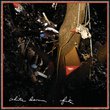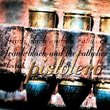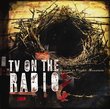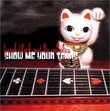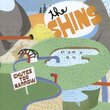| All Artists: The Blind Shake Title: Rizzograph Members Wishing: 0 Total Copies: 0 Label: Learning Curve Original Release Date: 1/1/2007 Re-Release Date: 10/30/2007 Genre: Metal Style: Number of Discs: 1 SwapaCD Credits: 1 UPC: 890863002149 |
Search - The Blind Shake :: Rizzograph
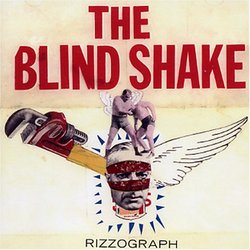 | The Blind Shake Rizzograph Genre: Metal
"Thelonious Monk was said to play the notes between the keys, sticking his fingers into those unreachable spaces where microtones and otherworldy scales live. True as that may have been, it's also impossible (a paradox whi... more » |
Larger Image |
CD Details
Synopsis
Product Description
"Thelonious Monk was said to play the notes between the keys, sticking his fingers into those unreachable spaces where microtones and otherworldy scales live. True as that may have been, it's also impossible (a paradox which, considering Monk's paranormal mystique, was exactly the point). For those non-magical musicians closer to Earth, then, a more practical way to scratch those hard-to-reach notes is required. Jim Blaha, guitarist and singer for local noise-rock trio the Blind Shake, works his own brand of off-key mystique into his songs, but through a more direct approach; he just tunes his guitar strings to whichever bizarro half-notes he thinks the song needs. If the next song is in a different tuning, he has another guitar prepped and waiting nearby. That this strategy requires him to tote no fewer than four guitars onstage every time he plays a show is a necessary, if showy, consequence. "People probably see me walk in with all these guitars and go, 'Who the f*ck is this guy?'" he says. "They don't realize they're the sh*tt**st $100 guitars you can buy," laughs his brother Mike, the Blind Shake's other singer/guitarist. The siblings are eating dinner with their drummer, Dave Roper, at Grumpy's in downtown Minneapolis. They look like slightly skewed mirror images of each other: Both have shaved heads, short noses, and square jaws. Jim, a former track athlete, is svelte and inward; Mike, a former football star, is thicker, more talkative. Jim plays a standard guitar, while Mike plays the less-common baritone version. "He's 15 months older," says Mike, citing the number like it's a distance he's been running his whole life. "And I'm 15 pounds heavier." Grumpy's is a tailor-made setting for a band like the Blind Shake. When it opened in the late '90s, owner Tom Hazelmeyer secured funding through his other venture, Amphetamine Reptile Records. Now, sipping sodas beside the bar's front windows, sit three guys who picked up the torch dropped by that noise-rock label's old standard-bearers--Hammerhead, Calvin Krime, the Cows, the Freedom Fighters--and are running hard with it. And if the band didn't already feel at home in this den of hard-drinking Melvins fans, the hulking dude behind the bar is none other than Rainer Fronz, founder of Learning Curve Records, the label that signed them. ("He can dunk," says Mike of the former basketball player-turned-post-punk impresario. Jim laughs. "Yeah, that's why we signed with him. Because he dunks.") It's Thursday, and the band is skipping their usual rehearsal to recuperate from a three-week tour promoting their debut, Rizzograph, a hard-and-fast little album released on Learning Curve in October. Rizzograph is a quick study of the sonic formula that turned AmRep into one of the most successful indie labels in Minneapolis history. Each short song turns on a single, dissonant riff, with verse, chorus, and (the occasional) bridge all within a minor step. Even the vocal lines are delivered as riffs, hanging loosely on the rhythmic foundation, adjusting its shade and texture but never its shape. This high-energy blueprint runs through the entire record, making up in consistency what it lacks in dimension. Packaged as 12 90-second songs, Rizzograph could just as easily be one incredible 19-minute song. But then, when would Jim switch guitars? The crowds on this most recent tour were especially rapt by the band's fuzzy noise blanket. "It was definitely our most successful tour yet," says Jim, who can't agree with Mike about whether it was the group's third or fourth tour. One thing they can agree on: Grand Rapids, Minnesota, is their favorite place to play. "They have a great scene up there," says Jim. "Kids were shouting our name and even singing along with our songs."
Similarly Requested CDs
| Wilco A Ghost Is Born Genres: Country, Alternative Rock, Pop, Rock Label: Nonesuch | |
| White Denim Fits Genres: Alternative Rock, Pop, Rock Label: Downtown | |
| Wilco Summerteeth Genres: Country, Alternative Rock, Pop, Rock Label: Reprise / Wea | |
| Frank Black & Catholics Pistolero Genres: Alternative Rock, Pop, Rock Label: Spin Art | |
| Band of Horses Infinite Arms Genres: Alternative Rock, Pop, Rock Label: Columbia | |
| Frank Black & the Catholics Show Me Your Tears Genres: Alternative Rock, Pop, Rock Label: Spin Art | |
| The Shins Chutes Too Narrow Genres: Alternative Rock, Pop, Rock Label: Sub Pop | |

 Track Listings (12) - Disc #1
Track Listings (12) - Disc #1
